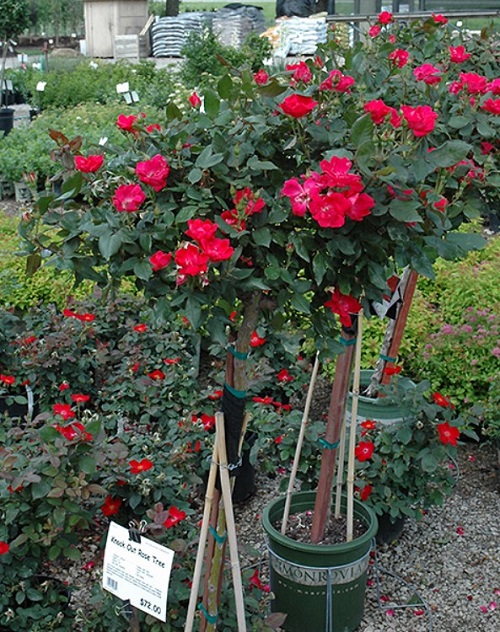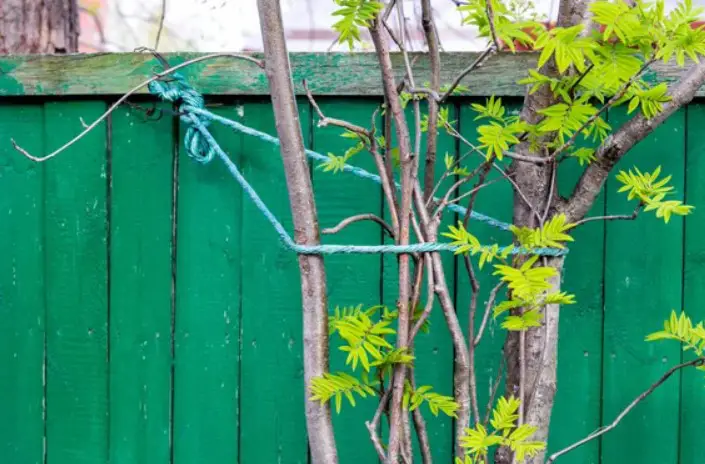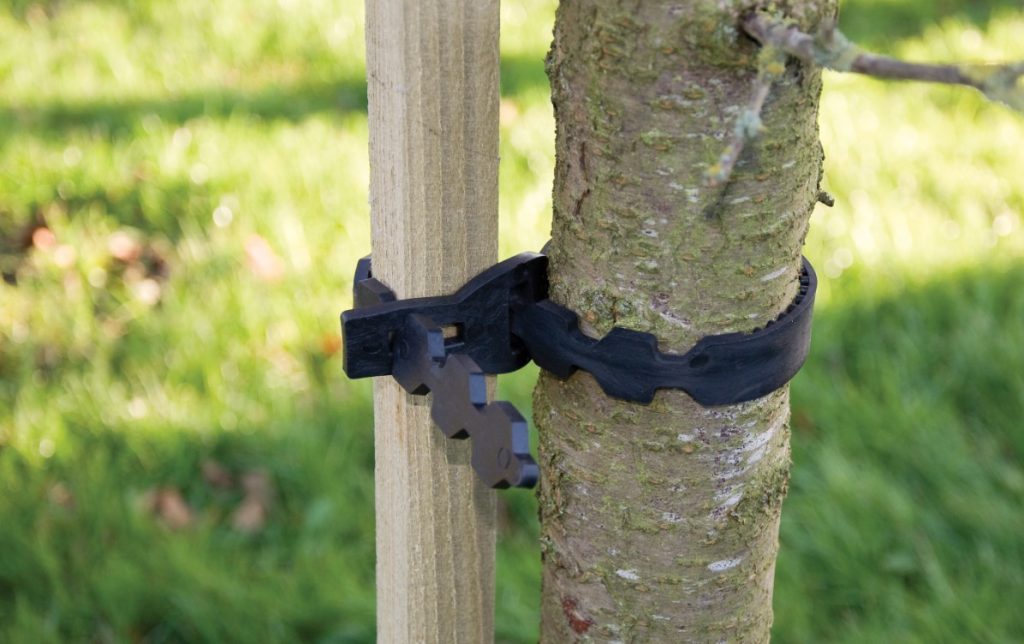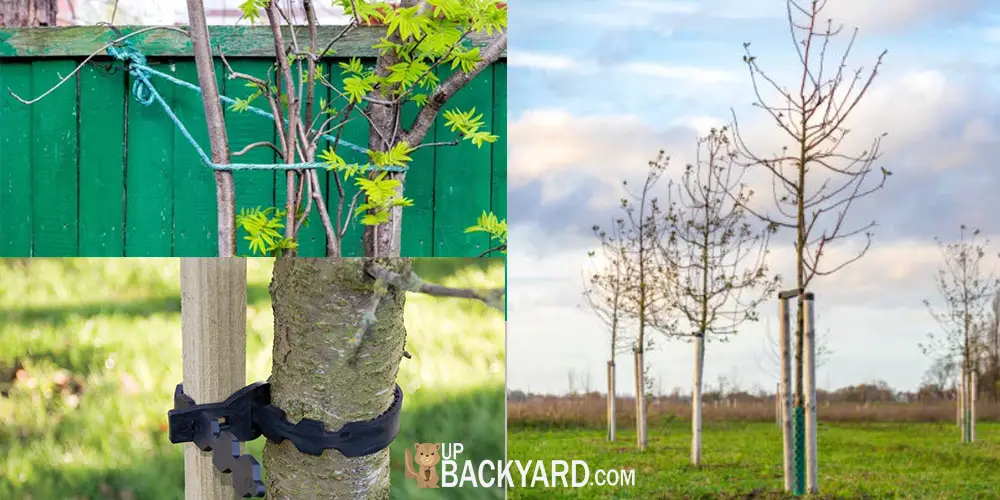Trees are great to have in any yard. They continue to grow as you and your family get older and they tend to be a staple in many of our memories. Have a big enough tree and you can attach a swing to it!
Except, you can’t attach a swing to a tree that is growing at an angle. Due to windstorms and temperature fluctuations, a tree can start to grow at an angle.
This is a problem with a relatively easy solution. Straightening a tree only takes a few steps!
Why Does Having a Straight Tree Matter?
It’s not bad for the health of a tree if it isn’t growing perfectly straight, which brings us to our question: Why does having a straight tree matter?
Having a straight tree is a matter of personal preference. While it’s okay for a tree to grow curved, it’s not the prettiest site for our yards. Instead, we want trees that grow towards the sky to have a nice yard.
Without a straight tree, you also can’t use it for many of the classic decorations and activities. It is harder to hang decorations from a curved tree and you can’t attach a swing to it.
Having a straight tree allows you to incorporate the tree into your yard in a much better way.
You might like: Why Do Copper Nails Kill Trees?
How Do You Straighten a Tree
The less your tree has already curved will make it easier to straighten it out again. There are a few techniques that you can use, so take a look and choose the one that works best for the level of the curve your tree has.
Using Stakes
Using stakes to straighten a tree gives your tree both a support and a guide for the direction it grows it.
There are many times when someone will use stakes or another form of support to encourage the growth of a plant.
We can see this with fences for rose bushes that make sure the bush grows up instead of out.

This method works the best for trees that are still very young. As the tree grows older and older, the stake method won’t work nearly as well, and it can make the tree weaker.
The staking method works best as a guide as a tree is still growing relatively quickly.
First, get stakes that are large enough for your tree. The stakes shouldn’t be taller than the tree as it will prevent the growth of the leaves.
Using a sledgehammer, drive 2 or 3 stakes into the ground. These stakes should be placed around the roots/trunk of the tree. Place the stakes on the side where you want your tree to go.
This is because you will later pull the tree in that direction and upwards. This is why this method only works with smaller trees that are still growing.
Drive the stakes at a 45° angle towards the trunk of the tree and then at least 18 inches downwards. Make sure to not stab the roots of your tree.
Once you have the stakes in, push the tree up against the stakes. Using a rope, twine, or some other binding material, tie the trunk of the tree to the stakes to secure it. You can even purchase straps that are specifically made for tying a tree.
When tying the tree, make sure the binding is low enough to allow the canopy of the tree to sway but secure enough that the tree can’t bend over again.
Keep the stakes in for about a year to allow the tree to become secure enough. If the tree is now growing straight, you can remove the rope and stakes.
However, if it tries to bend again, redo the stakes to support the growth of the tree.
You might like: How Do I Stop My Palm Tree From Growing Taller?
Tying to a Fence
If your tree is near a fence, you already have the perfect support to tie your tree against. For this, all you will need is your rope or tree straps.

Pull the tree towards the fence (this also only works if the tree isn’t leaning towards the fence) and wrap your rope or straps around it. Make sure that it is secure enough that the tree can’t start to bend but still lose enough that the canopy can move.
You will want to keep the tree tied for at least a full season if it’s a young tree and possibly over a year if the tree is older.
Straightening a Mature Tree
Straightening a mature tree is the trickiest task because you are dealing with a tree that has been growing for many years and now has a thick trunk.
These trees will take a much longer time to correct a curve as you also can’t force it into the position that you want.
Dig a trench around the trunk of the tree. It should be 10 inches deep for every inch of the trunk’s diameter. Get a material to cushion the bark of the tree such as a blanket or a small amount of padding.
Use rope or specific tree straps and wrap it around the tree where you have the padding. This padding is just to protect the trunk of the tree from warping around the rope as it continues to age.
Using the rope, pull the tree to where it is straight. This task might require multiple people to help, depending on the size of the tree.
Once the tree is straight, secure the rope or straps into the trench with smaller stakes. This will keep the tree in place.
Once done, fill the trench with dirt. This will add an extra layer of security while also making your yard look better.

This process can take several years if your tree has been fully grown for a while. As time passes, the tree will slowly correct itself with its new positioning.
After a year or a few, release the ties and check out how straight the tree is. If your tree still has a lean, redo the ties and wait another season.
4 Tips and Reminders for Straightening Your Tree
Keep an Eye on the Ties
With each method we have mentioned, each involves the use of rope or straps around the tree.
These are the easiest methods to use, but you do have to periodically check them. As your tree learns to become straight, the rope might loosen up.
This isn’t a big problem, but to keep your tree on the right path, you will have to redo the ties to make sure they are tight enough.
Be Careful of the Roots
When you are putting stakes into the ground or digging trenches, you have to be cautious of the roots of the tree.
You don’t want to accidentally stab and damage the roots, which will overall damage the tree. If you cause too much damage, you might kill your tree.
If you find that there are roots in the way where you want to place supports, gently break up to roots before you try to move them.
Gently breaking them up makes them looser and easier to move. Adjust the roots so they are out of the way of your supports before putting them into the ground.
Take Extra Good Care of Your Trees
Putting stakes into the ground and forcing the trunk in a different direction can cause stress to the tree. Too much stress and the tree will start to die off.
To offset the stress you have caused to the tree, take extra good care of it as it’s in a straightening position.
Give your tree the proper amount of water and make sure the ground is fertilized. Give your tree plenty of nutrients so it can heal from any stress and have enough nutrients to grow in the direction you want it to.
Know Your Weather
If you live in a very windy area that is prone to either tornados or hurricanes, you must be aware of how that will impact the way your trees and plant life will behave.
All young trees should be braced when you live in such a windy area so that they can grow strong in the face of all the wind.
Knowing the weather you have will help you know how to best take care of your plants. Depending on how windy, rainy, or natural disasters you get, you may not even be able to have straight trees.
Final Thoughts
Having straight trees makes a back or front yard look very nice! However, we can’t always help the way our trees start to grow. But at least we can correct it!
Through these discussed methods, you can get your tree to grow straight instead of curved over. With these fixes, you’ll be able to attach a swing to the branch of your tree!
If you have corrected a curved tree and have gotten it to grow straight, let us know how you did it in the comments!
